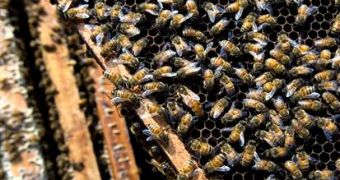Species of honeybees inhabiting the Asian and the European continent are somehow different from each other through the fact that they communicate using different languages. About 30 to 50 million years ago, honeybees split into nine species currently found all over the world and started developing unique communication languages. Honeybees 'talk' to each other through dance, thus sharing valuable information such as where flowers are found or where the hive has set the nest.
"The scouts perform the so-called bee dances inside the nest. The coordinates of distant locations are encoded in the waggle phase of this ballet, with the direction and distance to the food source indicated by the orientation and duration of the dance", said Shaowu Zhang of The Australian National University, leader of a study revealing that bees are able to interpret the language of different species.
For example, different bee species trying to communicate the same information have different dances, thus a different language, said Zhang. Honeybees are species of bees that build colonial hives out of wax and produce and store honey.
However, when the Asian species of honeybees - "Apis cerana cerana" - and the European one - "Apis mellifera ligustica" - were placed together, Zhang showed that the two species not only adapted very well, but they were also able to learn each other's language. Researchers placed multiple feeders at different distances having them orientate in relation to the hive. As the European species was trained to find a feeding place, the Asian one interpreted the dance of its cousin and also found the feeder. The situation seems to work the other way around as well, as while the Asian species is trained, the European one eventually learns the language. "They can understand and communicate with each other", Zhang said.
What triggers such a behavior however remains mostly unknown. "The different species of honeybees do not live together in nature. We established an artificially mixed colony for our experiments", said Zhang.

 14 DAY TRIAL //
14 DAY TRIAL //